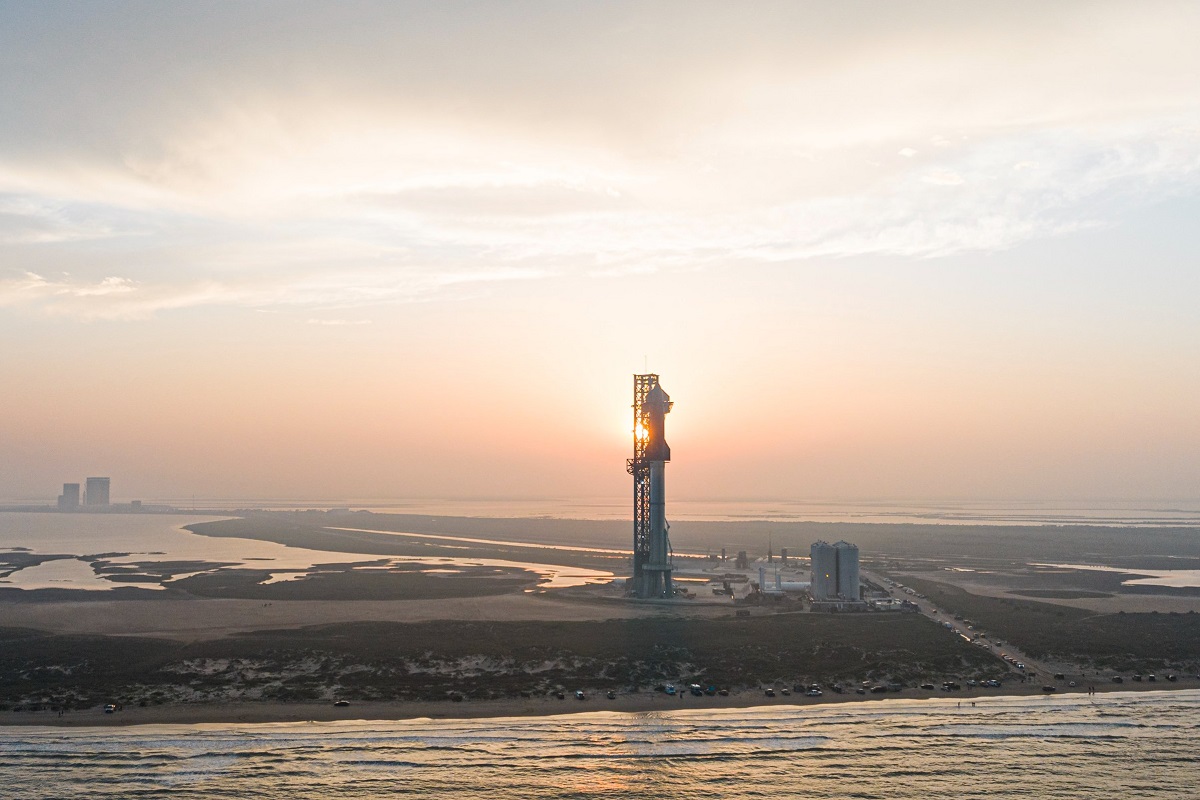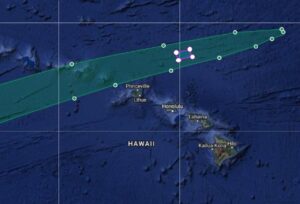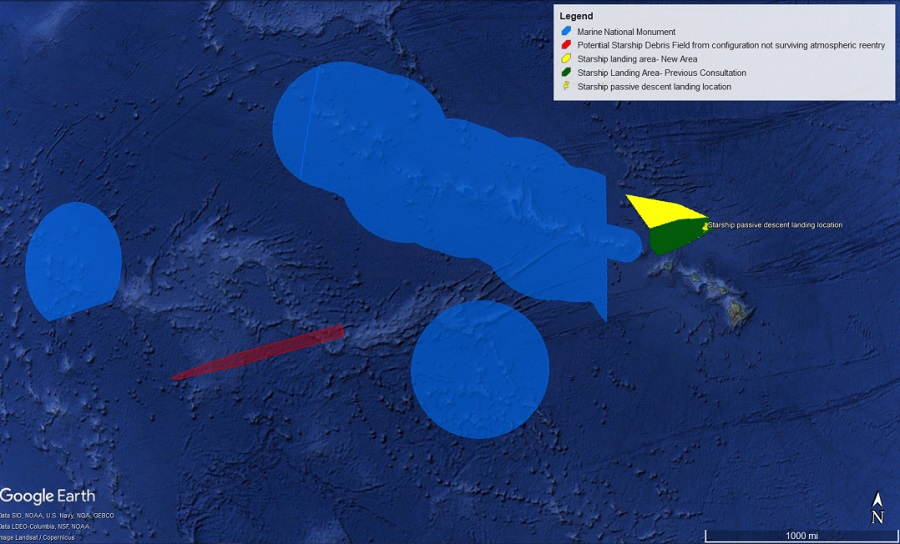
SpaceX is preparing the historic launch of their Starship and Super Heavy Rocket from southern Texas; if all goes well, the massive rocket will head on its first orbital journey before coming down near Hawaii just 90 minutes later. A document released by the FAA now details exactly what will happen near Hawaii at the end of this orbital flight test, and the results could be quite explosive.
Space X has designed Starship to be a fully reusable transportation system designed to carry both crew and cargo to Earth orbit, help humanity return to the Moon, and travel to Mars and beyond. Several tests have occured up to this point and more tests are planned in the months ahead before people travel on Starship. With an orbital flight test such as the one planned for Monday, April 17, SpaceX says, “success is measured by how much we can learn, which will inform and improve the probability of success in the future as SpaceX rapidly advances development of Starship.”
In addition to the testing of Starship’s upper stage, the team has conducted numerous tests of the Super Heavy rocket, which include the increasingly complex static fires that led to a full-duration 31 Raptor engine test. That 31-engine test was the largest number of simultaneous rocket engine ignitions ever in history. For this orbital test, SpaceX will attempt to nearly circle the world with Starship and not much else; for this first flight test, the team will not attempt a vertical landing of Starship or a catch of the Super Heavy booster. Such attempts will be made at future test launches.
As part of a slew of documentation released by the FAA when SpaceX’s license to launch Starship was issued, included in the documentation was a re-evaluation of the 2022 “Final Programmatic Environmental Assessment for the SpaceX Starship / Super Heavy Launch Vehicle Program at the Boca Chica Launch Site in Cameron County, Texas.” That document, authored by Stacey Molinich Zee on April 14, 2023. This Programmatic Environmental Assessment or PEA for short details numerous specifics of the launch plans, including possible environmental impacts at the launch site around Texas and the planned splashdown site around Hawaii.

According to the updated PEA, from a height of about 75 miles, Starship would begin its passive descent back to Earth over the Pacific Ocean. During this descent, residual rocket fuel amounting to roughly 10 metric tons of Liquid Oxygen (LOX) and 4 metric tons of methane would remain with the spacecraft to the surface. The PEA says the residual fuel “represents approximately 1.1 percent of the total fill levels for the Starship main tanks.”
“Starship would impact the Pacific Ocean intact, horizontally, and at terminal velocity, and the impact would disperse settled remaining propellants and drive structural failure of the vehicle. The structural failure would immediately lead to failure of the transfer tube, which would allow the remaining LOX and methane to mix, resulting in an explosive event,” the PEA describes.
With a planned 8am Central Time Launch in Texas (3am Hawaii Time / 9am Eastern Time), such an explosive event would occur 90 minutes after launch time as the Starship returned to Earth near Hawaii. This means Starship would explode upon impact in the off-shore waters of Hawaii at 4:30am local time (10:30 am Eastern Time / 9:30 am Central Time) assuming an on-time launch free of technical issues.
While recovery of Starship isn’t expected due to the explosive event planned, SpaceX resources will attempt to retrieve any large debris pieces from the ocean.
“Following the Starship breakup, SpaceX would have a vessel in the area of highest likelihood of debris that would identify large debris for salvage. SpaceX would use the vessel to survey the debris field for approximately of 24 to 48 hours using visual survey in the day and onboard vessel radar at night) depending on the outcome of the breakup,” the PEA says. “The initial survey area would be determined based on last known data location point received from the telemetry on the vehicle upon splashdown. Weather and ocean current data would be used to further characterize the debris field as the operation is conducted.”
During the debris recovery mission, SpaceX will coordinate with the United States Coast Guard on their endeavors.
“If debris is generated, SpaceX expects the majority of the Starship debris would sink because it is made of steel and will have sufficient mass to sink to the seafloor,” the PEA adds. Debris is expected to sink within the expected landing location which is 240 nautical miles east of the Papahanaumokuakea Marine National Monument; SpaceX says any debris is not expected to drift into the Papahanaumokuakea Marine National Monument. However, they caution that some lighter items not made of steel, such as composite overwrapped pressure vessels, may float for a short period before sinking after becoming water logged.
SpaceX also adds that though not expected and unlikely, if there is floating debris found by the vessel during the debris field survey, they would sink or recover any floating debris before it could drift into the Papahanaumokuakea Marine National Monument by physically removing the item or puncturing the item to cause it to sink.

The PEA also evaluated potential impacts to marine life around Hawaii from such an explosive return to Earth of Starship. A consulting biologist explored marine mammals and sea turtles that could be in the splashdown zone; these creatures include assorted whale species, the Hawaiian Monk Seal, assorted turtle species, the Giant Manta Ray, and the Oceanic Whitetip Shark. Based on their assessment of marine life being “harassed” or injured as a result of this impact, they project less than 1 marine life would be impacted in this zone.
SpaceX plans to start a live webcast on their website roughly 45 minutes before their planned liftoff. SpaceX cautions, though, “as is the case with all developmental testing, this schedule is dynamic and likely to change, so be sure to stay tuned to our social media channels for updates.”
Questions remain with how successful this rocket test will be. When SpaceX was testing their first Falcon 1 rocket, their first three launches proceeded to fail. SpaceX Founder Elon Musk has said he believes there’s a 50-50 chance of this orbital test flight of Starship to succeed.
SpaceX wrote, “As we venture into new territory, we continue to appreciate all of the support and encouragement we have received from those who share our vision of a future where humanity is out exploring among the stars!”